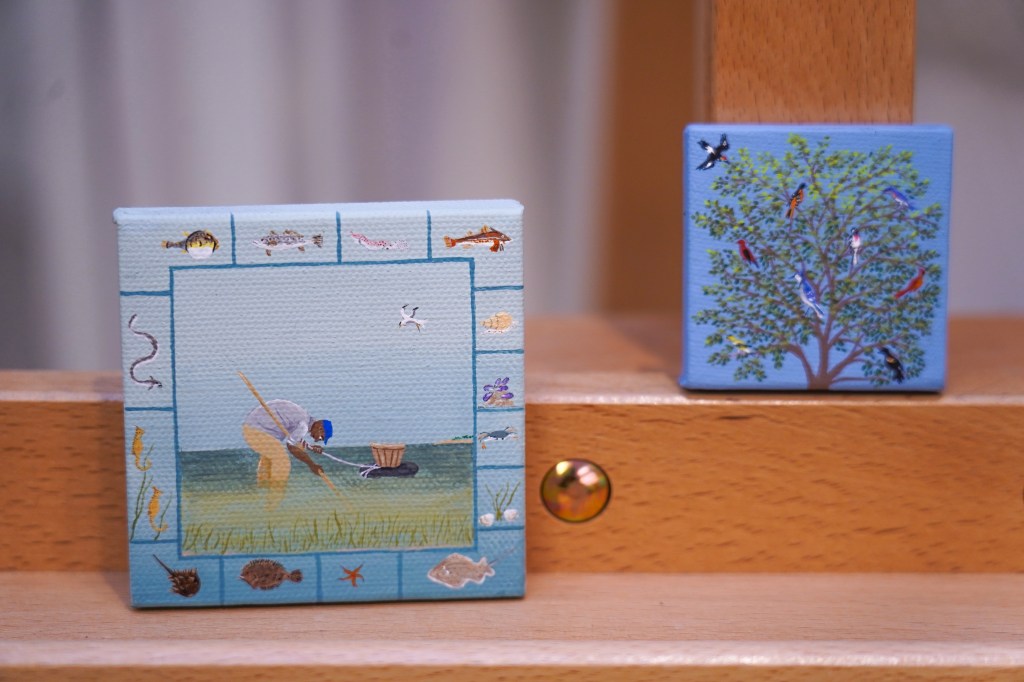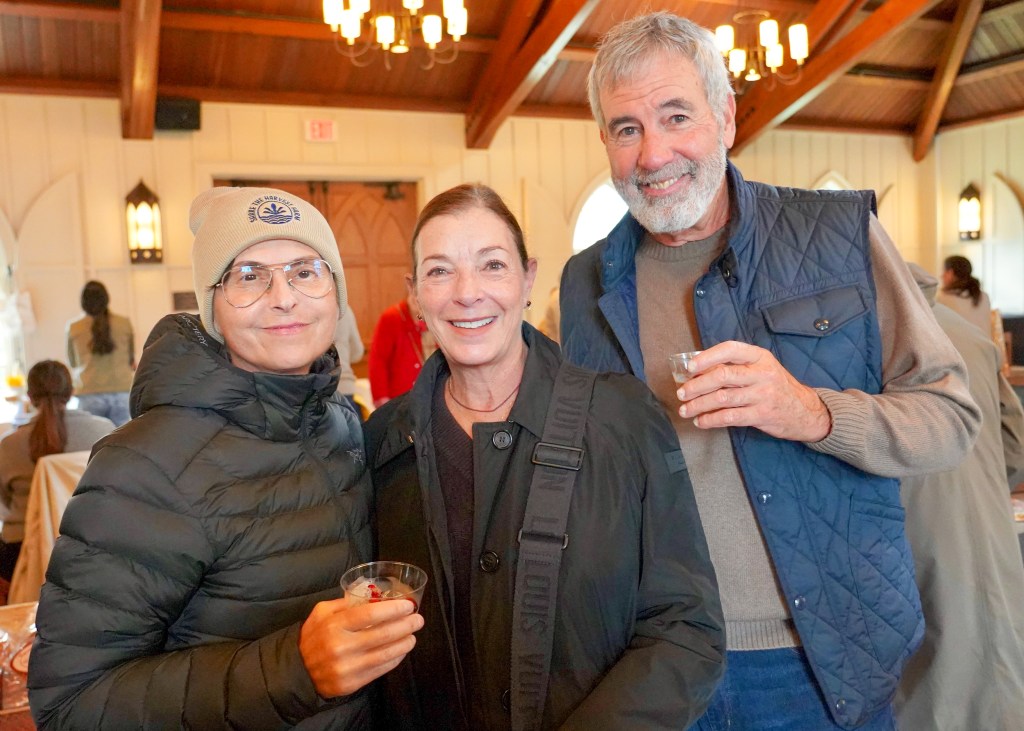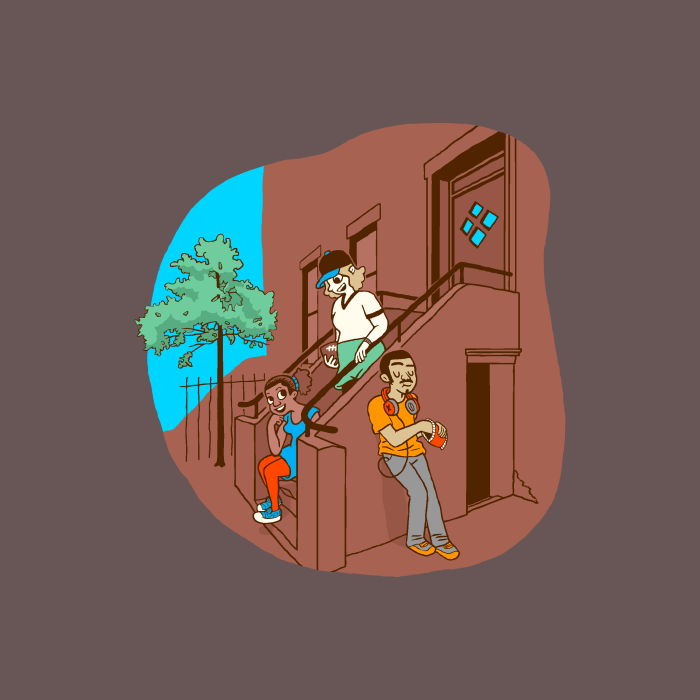'I Say Potato' Celebrates Art of the Tuber in Bridgehampton
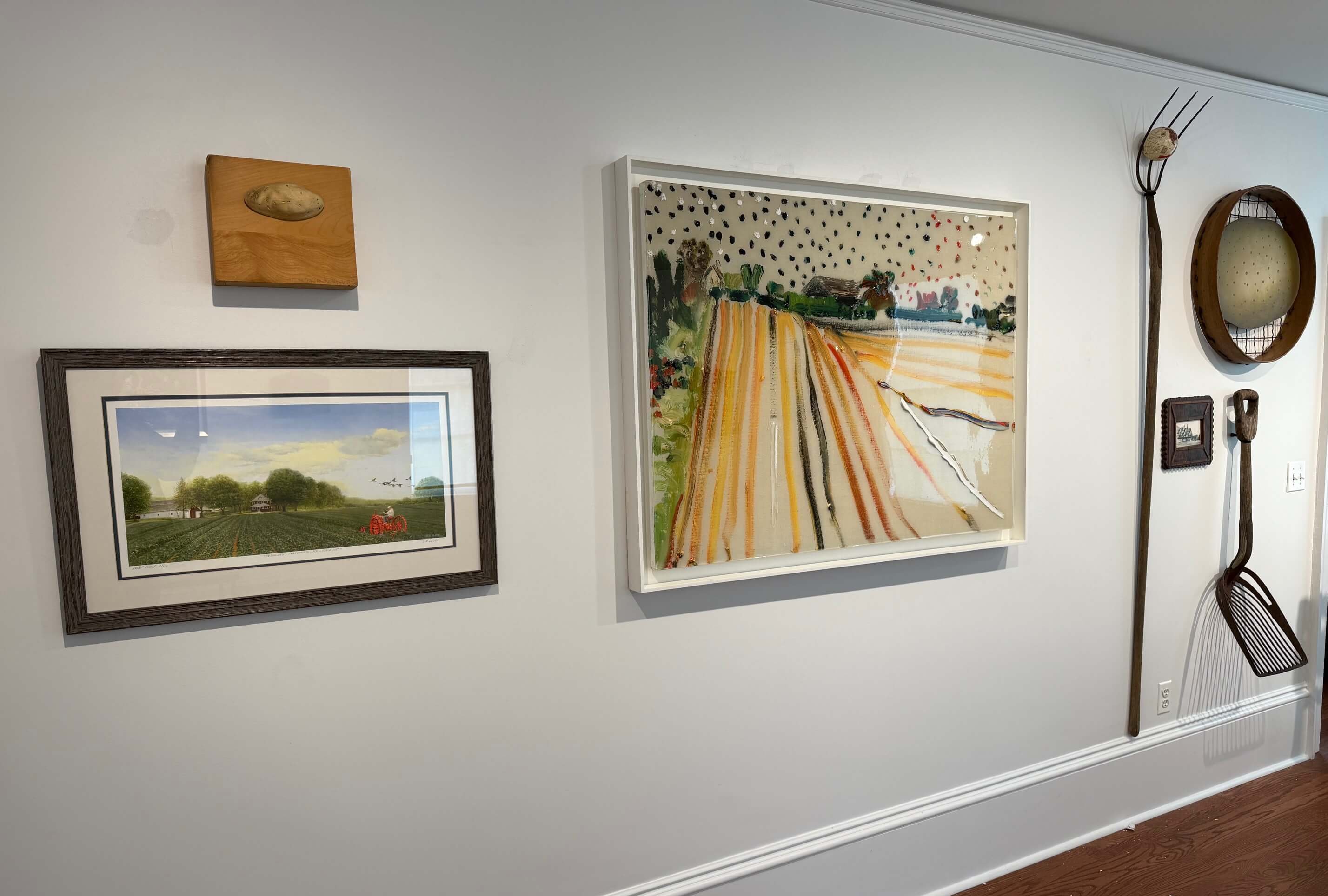
The newly christened Bridgehampton Museum is kicking off summer with I Say Potato, an art exhibition celebrating the Hamptons’ long tradition of potato farming. According to the museum, the show is an immersive, interdisciplinary exhibition that “unearths the profound historical and cultural significance of the potato on Long Island — especially in the fields and memories of Bridgehampton itself.”
Featuring more than 30 works by local artists, curated by Mark Wilson, I Say Potato opens this Friday, June 6 with a reception from 6–8 p.m. at the museum’s beautifully renovated Nathaniel Rogers House location (2539 Montauk Highway) in Bridgehampton. It offers a diverse range of media on view, including paintings, sculpture, video, historical ephemera, and some especially unique approaches to the subject, like an X-rayed potato sack and a humorously redesigned map that replaces Long Island with a spud.
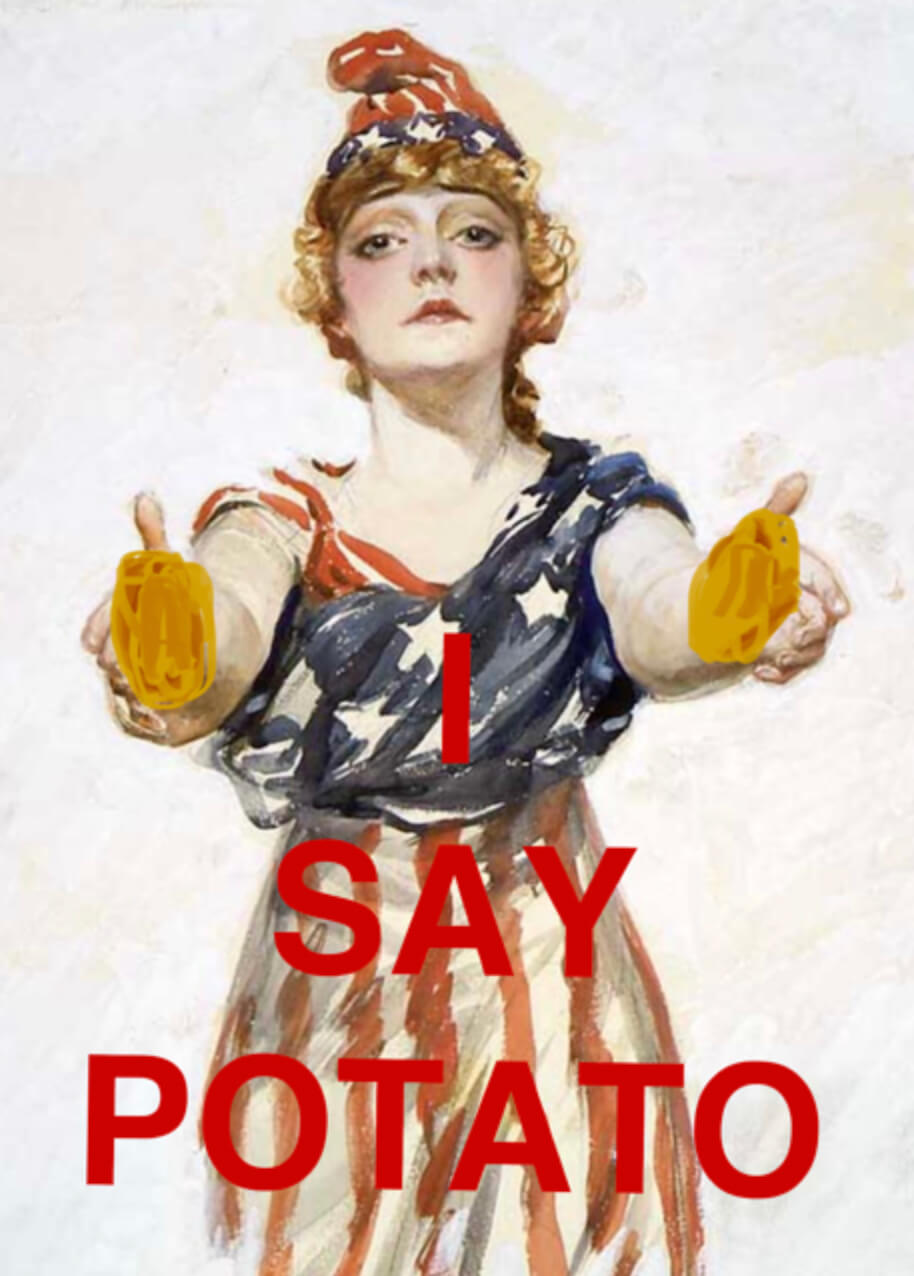
Together, the works in I Say Potato explore the powerful mark this simple tuber has made on the region, which once thrived as a farming hub, before those barns eventually ceased operations and, in many cases, ended up as studios for the artists of the East End.
One artist in particular, Steve Miller — who X-rayed a sack of potatoes for this show — lives and works in a refurbished potato barn in Sagaponack (which means “land of the big ground nuts” in the Shinnecock language) that was once the studio of another local art icon, Frank Stella. Miller points out that he rarely makes work specifically for an exhibition, but something about this potato theme grabbed his attention.
“I made a special project because of my belief in the project and the history, and just loving it out here,” he said. “If nobody buys it. I can’t wait to have it back.”
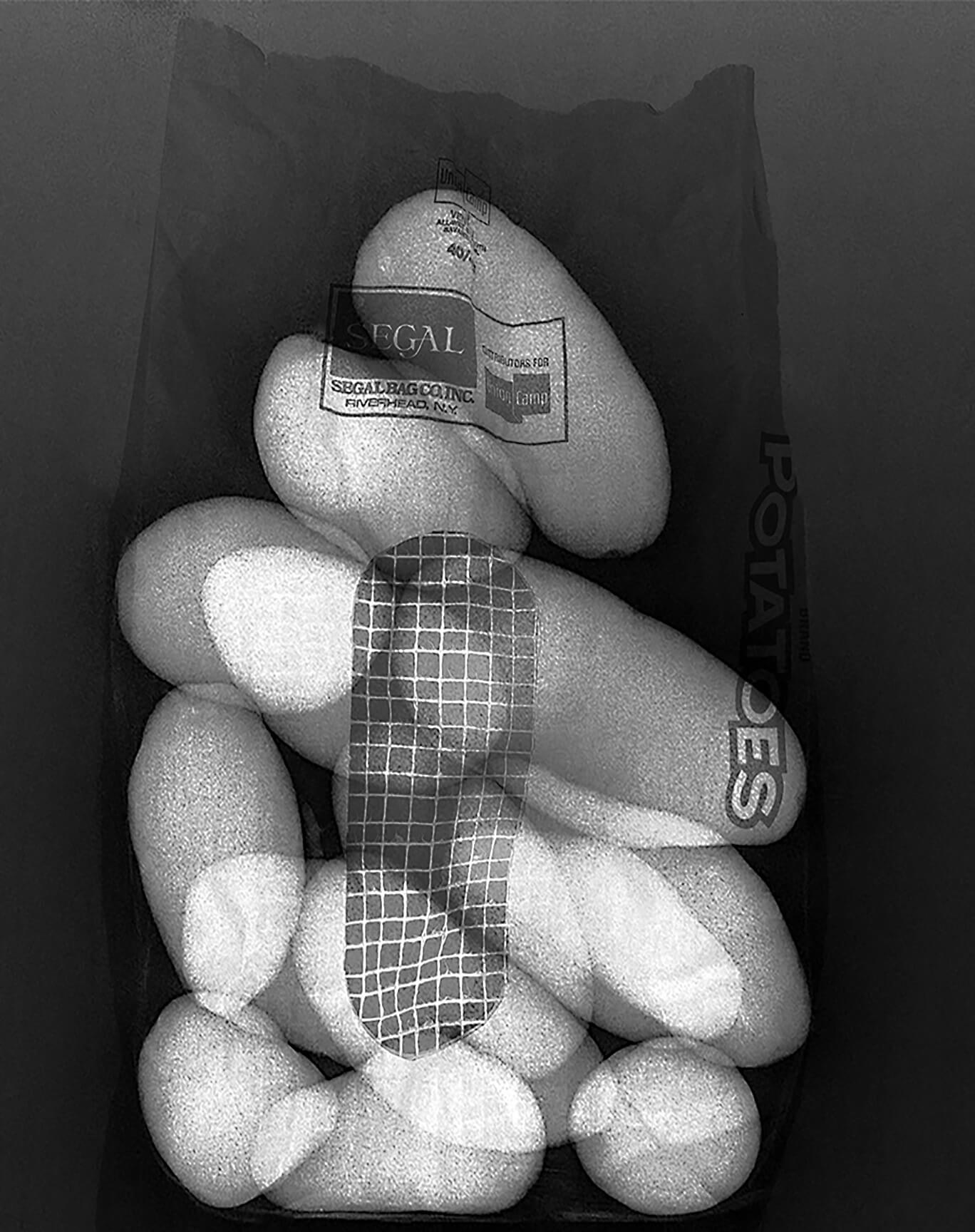
Miller is well known for his X-rays of Brazilian wildlife and high-fashion items, like purses and stiletto heels, but potatoes were a new subject for him. “I thought it would be a really cool idea to get the local potato and the local potato bag, which was a bit of doing,” he said. “So I got the last five pound bag of potatoes that they had available that could then fit on an X-ray plate. My idea was, OK, let’s X-ray a bag of potatoes for the potato show.”
The vast array of art includes pieces by Ned Smyth, Sven Lukin, Edward Joseph, Darius Yektai, Idoline Duke, Almond Zigmund, Peter Dayton, Suzannah Wainhouse, David Winter, Vito DeVito, the curator Mark Wilson, and numerous others, plus a variety of modern and historic images and objects Wilson gathered from just about everywhere. He said the show was loose in its formation.
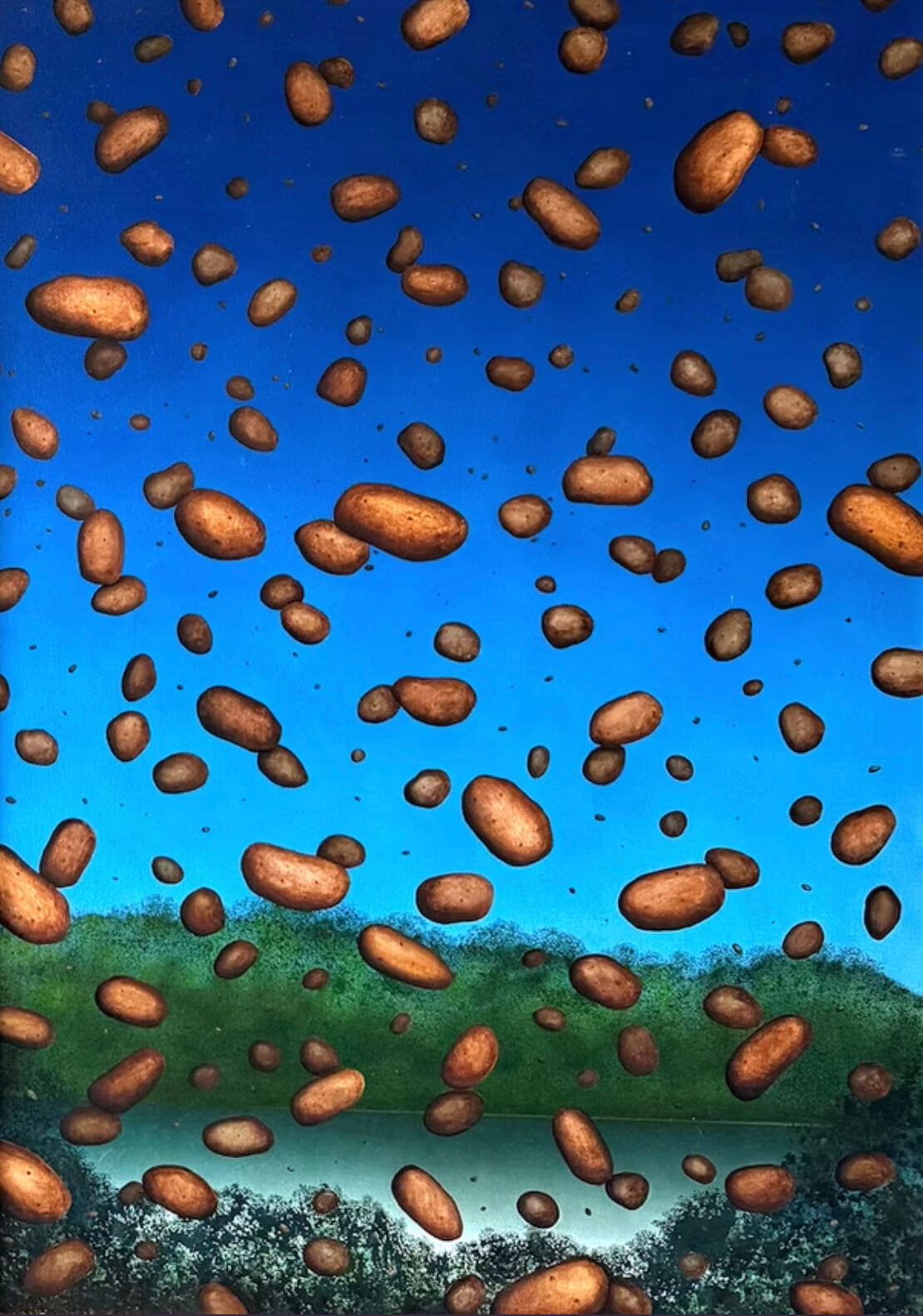
“It’s just like notes to self. You know, I’m not going to overthink it. I’m just going to like whatever comes to me during the day, whatever it is that arrives, whichever artist — like Ed Joseph, I mean, several: Pia (Leighton), all these people I didn’t know until they just came by on my radar,” Wilson said, explaining how I Say Potato took shape.
“I’m a bit of a collector myself, so I have objects that I’ve incorporated potatoes with, whether that’s something from Tibet or something from, you know, some geological specimen. It’s all somehow connecting to the potato,” he continued, noting he has 1950s-era photos of misshapen potatoes from Antoine Almedia, and an image of a real 10-foot 7-inch French fry in what he calls “the Edible Room’ of the show. Wilson has also included Pringles containers painted by kids from Leighton’s Whisper & Brush Art School for children in the Hamptons. “It’s kind of a play on Andy Warhol’s soup cans. But this is Pringles, and she had the kids imagine that they were potatoes underground 7,000 years ago in the Andes Mountains,” he said.
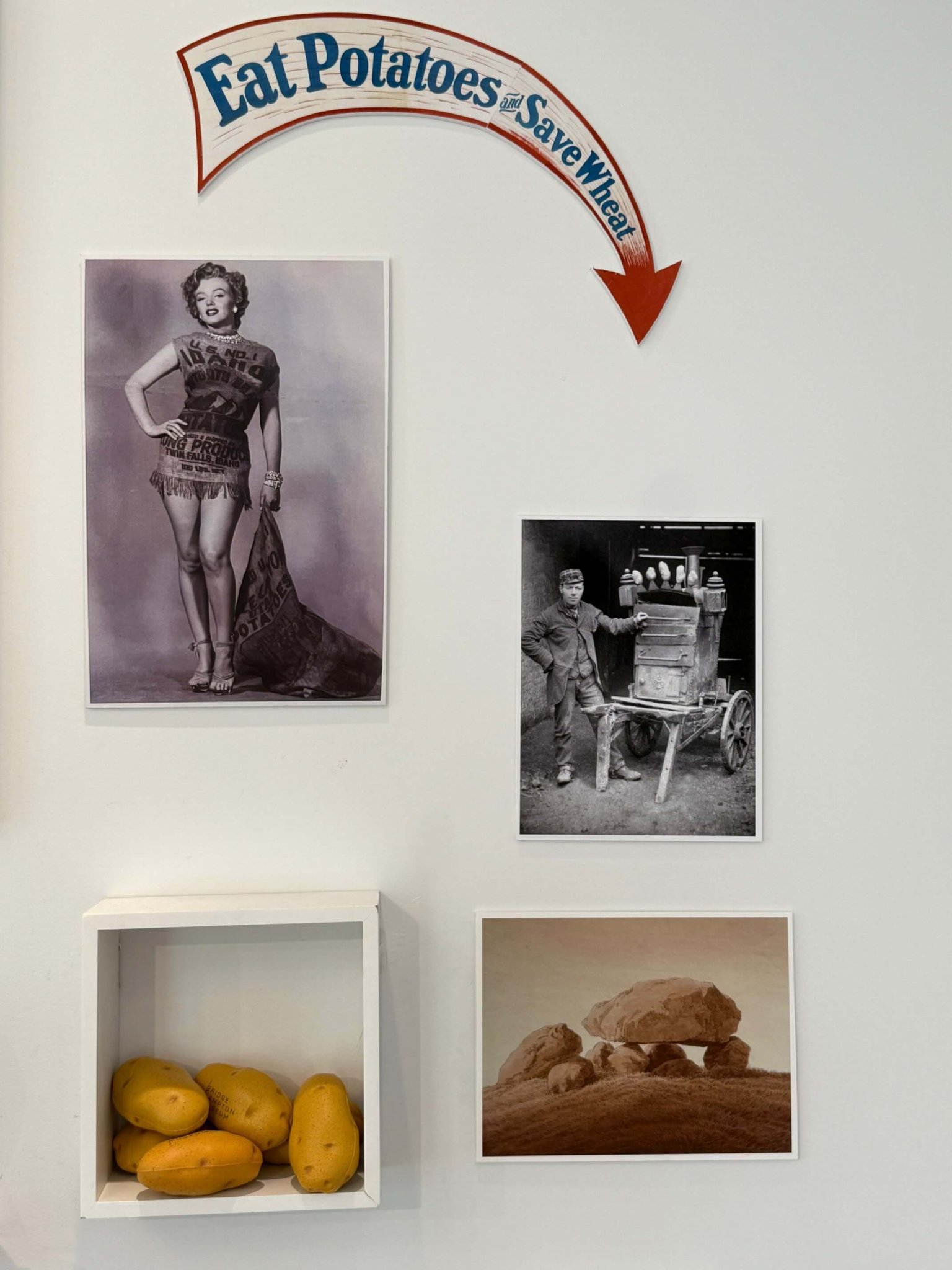
Wilson has even displayed the famous 1951 image of Marilyn Monroe wearing a potato sack as a dress, which she did after a female journalist called her “cheap and vulgar” for wearing a sexy dress, and then said the starlet would have looked better in a potato sack.
“At its essence, the exhibition is about memory of place,” Wilson said. “Even if we don’t always recognize it, the legacy of the potato influences how we live, farm, create and remember,” he continued, peeling back the layers of the starchy vegetable that is deeply engrained in the fiber of this place. The curator added that everything in this exhibition comes down to a quote by the great German artist and theorist Joseph Beuys, who famously said, “Even the act of peeling a potato can be an artistic act if it is consciously done.”
See I Say Potato at the Bridgehampton Museum in the Nathaniel Rogers House, 2539 Montauk Highway, Bridgehampton. Visit bridgehamptonmuseum.org for more info and hours.


